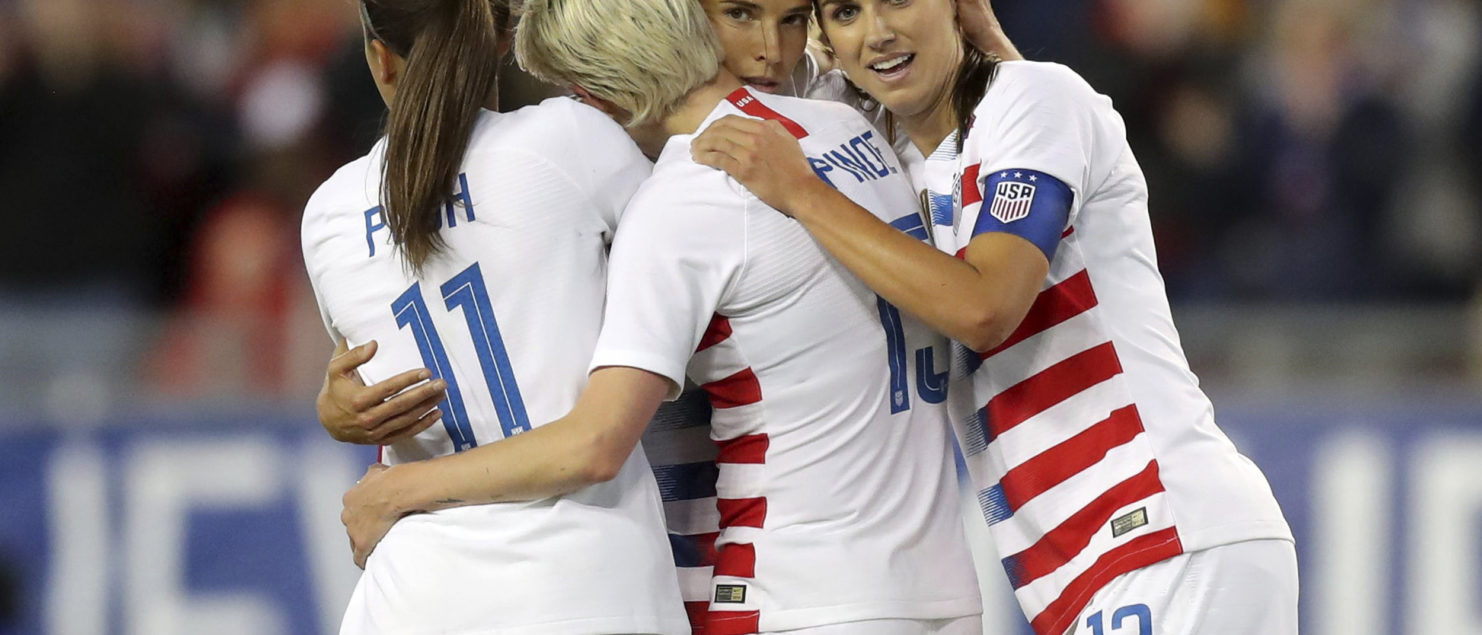The gender pay gap in soccer: tackling discrimination one step at a time
Women’s football has gained some positive press in recent months, from Phil Neville’s Lionesses blossoming in their World Cup qualifiers, to the stadiums of high-profile teams such as Barcelona, Lyon and Juventus being sold out on a regular basis.
Yet if we are to really make the most of this momentum, we must discuss the gender pay gap. With women’s football on the rise, it’s senseless and unfair for female footballers to keep earning low wages despite producing performances of the highest calibre.
And you only have to take a look at the likes of Chelsea, Manchester City and Arsenal to understand that a lack of talent is not a sufficient reason why.
Fran Kirby – the inaugural winner of the women’s Footballer of the Year award – scored 24 goals in all competitions in 2018 to fire Chelsea to their first Women’s Super League (WSL) title. The 25-year-old has turned into an attacking live-wire, capable of playing both in her preferred number 10 position, as well as drifting onto either flank.
Kirby continues to impress in international colours under Neville, adding another trophy to her collection in early March when England won the SheBelieves Cup.
Yet she isn’t the only player lighting up the WSL. Alongside her, Vivianne Miedema and Nikita Parris are equally inspiring with record-breaking goals and performances. Miedema, the league’s current top scorer with 16 goals to her name, continues to impress in an Arsenal shirt, while Parris is the all-time WSL leading scorer.
Outside of the WSL, women’s football is proving to be just as entertaining and attacking, none more so than in the National Women’s Soccer League. The likes of Tobin Heath and Megan Rapinoe have been lighting up the division with the Portland Thorns and Seattle Reigns on a weekly basis.
Just as in Kirby’s example, their domestic feats have been matched in their international performances.
The 2015 U.S. women’s team – where the likes of Heath and Rapinoe featured – played the most-watched soccer game in history, becoming the first team ever to emerge as victors in three separate women’s soccer World Cup titles, and participate in a game with the most goals of any men’s or women’s World Cup final.
The current US squad, led by Jill Ellis, are one of the favourites to win this summer’s World Cup.
It’s clear that women’s football is not short on quality. However, years of institutionalised gender discrimination has seen the discrepancy in pay become a norm despite the obvious talent on show.
The grim side-effects of this discrimination have seen players subject to subpar travelling conditions and substandard medical experiences, which have had a direct impact on not only their careers, but their lives outside of sport.
This led the U.S. women’s national team to file a suit against the U.S. Soccer Federation for gender discrimination on International Women’s Day, finally identifying the federation as the perpetrator in allowing the gender pay gap to worsen for years.
Not only has this negatively impacted the players concerned, but also their coach Ellis, despite the 52-year-old having a world championship to her name.
According to a newly filed public financial disclosure, Ellis was paid less than four different coaches who worked on the U.S. men’s failed qualifying campaigns for the 2018 World Cup and the 2016 Olympics, including two youth coaches.
This included Jürgen Klinsmann, who received $3.354 million for the last year of his contract, and his chief assistant, Andreas Herzog, who claimed a settlement of $355,537. Both were let go after the failures of the 2016 campaign but were still able to claim the expenses after their reign.
Meanwhile, Ellis was left to use her own resources to fund her team, and yet she still managed to lead her side to World Cup finals.
If such corruption exists that a federation would inflict complications to halt the success of their own football team, then the real question we must ask is: what motivates such associations to ensure that the head coach of one of the most successful teams in the history of women’s football receive 11 times less in base salary than her male counterpart claimed in settlement?
In doing so, they’ve made it clear that we can no longer complain that women’s sport ‘does not compare’ to male sports as reasoning to fuel the argument behind pay disparity, when people at the top end of associations have played their part in ensuring they are not on a level playing field with men – something that has been going on for years.
If federations are underpaying coaches and players in one of the most successful teams in their country’s history, whether it be to avoid controversy or simply out of fear of challenging the status quo, then it says more about our decisions to appoint such people than it does about what’s taking place on the field.
Yet, ironically, in allowing this issue to perpetuate by sweeping it under the rug, it’s actually had a more negative impact on the face of football as a whole. We’re creating divisions where there are none, without understanding that their successes must be ours.
Gender should not matter when international glory is at stake, nor should it be an issue when our women’s teams continue to reach new heights. Yet the corruption and gender discrimination taking place at the hearts of global federations proves that this issue must be tackled from top-down.
In the meantime, support the players as they light up their domestic leagues, applaud as they reach World Cup finals, and appreciate the skill on show.
By doing so, we’ll ensure that more and more companies begin to see that a lack of talent is no longer a cause for this crisis, nor has it ever been – that in itself could be enough to kick-start the change needed to end this.
By: Maryam Naz
Photo: AP Photo/Mike Carlson
